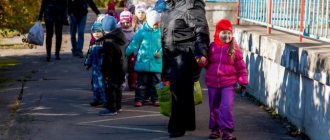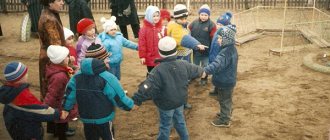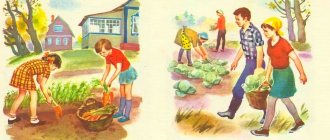Abstract: Regular moments in kindergarten: Getting children up after sleep and hardening procedures.
Now it's time to get up
Get up, kids!
After sleep, children consolidate their independent dressing skills, and the teacher helps them if necessary. Work continues to cultivate accuracy and independence. Children tidy up their hair. A teacher helps girls with long hair.
The main effects of hardening procedures:
• strengthening the nervous system
• development of muscles and bones
• improvement of the functioning of internal organs
• immunity to the action of pathogenic factors.
Hardening must necessarily take place against the backdrop of positive emotions. So that it does not cause rejection in the child, you can conduct it in a playful way, accompanied by cheerful, playful music.
Hardening methods.
Hardening is an active process that represents a set of methods for stimulating the hidden reserves of the body's defenses, their improvement, flexibility, and versatility. This is the development of a conditioned reflex to a particular irritation. Consequently, this is a training process, the construction of which, in order to achieve the maximum final effect, must be subject to certain physiological laws that underlie the mechanism for developing a conditioned reflex.
1.
The most traditional method is to gradually increase the strength of the stimulus. The agent can be any - air, water, sun, etc. A gradual increase in the strength of the stimulus is expressed either in an increase in the duration of its action, or in a gradual increase in the strength of the impact.
The method of gradually increasing the strength of the stimulus will certainly lead to good results, but not immediately.
2.
The method is contrasting. In young children, heat - cold - heat is used, and in preschool age, cold - heat - cold.
3.
Temperature reduction method. In this method, we use all the principles of hardening: systematicity, consistency, taking into account the individual characteristics of the child, etc.
4.
Hardening can only begin if the baby is completely healthy. If the child is ill, then no earlier than a couple of weeks after recovery.
5.
The duration and quality of procedures increase gradually.
6.
Procedures must be systematic and carried out daily.
7.
Hardening should evoke positive emotions in the child.
Recently, a hardening method combining an air bath and performing movements to music of different tempos has been widely used. This methodological technique allows, on the one hand, to harden the entire group of children, regardless of their level of health, and, on the other hand, to carry out an individual approach to children. In this case, the air temperature, the duration of the procedure, the area of the open surface of the body, the intensity of the exercises against the background of musical accompaniment can be dosed. This also ensures a good mood and motivation for children to perform hardening procedures in an educational institution and at home.
Dressing plan for the senior group
Dressing plan for the senior group
Download file - Dressing plan for the senior group
Contents of working with children. Strengthen knowledge about your body and the desire to take care of it. Cultivate neatness, neatness, independence, and attentiveness. Form the habit of a healthy lifestyle, the desire to take care of your health. I turn on a quiet, quiet melody and make a gradual ascent. After all the children have woken up, I turn on a more energetic and cheerful song and invite the children to do awakening gymnastics: I carry out hardening work: I pay attention to the appearance of the children. Having noticed problems, I invite the child to put himself in order and help him with this. I teach children to use a mirror, check their appearance, correct flaws in their suit and hairstyle, developing the habit of always being clean and tidy. I remind the children about the need to comb their hair, I help the girls braid their hair and ponytails. I invite the children to look at each other to see if everyone is combed, if everyone is neatly and neatly dressed, after which the children prepare for afternoon tea. Improve cultural and hygienic skills, develop the simplest skills of behavior while eating and washing. Teach children to use soap correctly, carefully wash their hands, face, ears; Wipe yourself dry after washing, hang the towel back, use a comb and a handkerchief. Formation of the need for hygiene and neatness in everyday life. Develop the ability to distinguish and name the sense organs eyes, mouth, nose, ears, give an idea of their role in the body and how to protect and care for them. I suggest that the children go to the washroom in an orderly manner. I tell the children to roll up their sleeves, carefully check the temperature with their hands, lather their hands, rinse off the soap, wash their face, wash their hands again, turn off the tap, remove the towel, wipe dry all parts of the face, asking the child to name them one by one as he wipes them. I make sure that children wash their hands thoroughly with soap, do not douse themselves or spray them with water, and that they wipe their hands dry. I will take an individual approach. I tell the kids to help arrange the necessary supplies for breakfast, lunch, and dinner on the tables, such as: Form an idea of healthy and unhealthy foods; about vegetables and fruits, dairy products that are beneficial to human health. To develop basic table behavior skills: After the children have sat down at the table, I wish them a bon appetit and tell them about the benefits of food. When the children are eating, I will make sure that the children sit upright at the table, hold the spoon correctly, do not talk while eating, eat carefully, finish the portion to the end, and use a napkin. I will remind the children to say thank you for the food. I can also use the artistic word: Develop neatness skills, the ability to notice disorder in clothes and eliminate it with a little help from adults. Develop the ability to independently dress and undress in the correct sequence. I remind the kids that the clothes they have taken off need to be folded and put back in their place, and I help if necessary. If necessary, I help the child get dressed if he asks politely. I’ll ask the dressed children to help the others. When everyone is dressed, I will examine the appearance of all the guys. I will discuss with the guys what toys and materials we will take outside. Develop the ability to pay attention to changes that have occurred in familiar plants. Encourage research interest and carry out simple observations. Teach methods of examining objects, including simple experiments. Developing children's interest in the process of playing with toys, natural and building materials. Help children unite to play in groups of people based on personal sympathies. Develop the ability to follow basic rules during the game. Develop independence and creativity when performing physical exercises and playing outdoor games. Organize outdoor games with rules. Develop the ability to walk and run freely, without shuffling your feet, without lowering your head, while maintaining cross-coordination of the movements of your arms and legs. Encourage children to participate in joint games. Develop interest in various types of games. While playing with toys and natural materials, develop interest in the world around us. Continue to develop children’s desire to participate in work. When passing by something, say a lilac, I draw the children’s attention to it and ask them if they remember what it was like in the fall, and I draw attention to what it has become now. I explain to the kids that they shouldn’t tear up plants unnecessarily, break tree branches, touch animals, etc. I tell the kids that they were all great, I directly praise them for their guesses. I give the children a general activity, a game, so that the whole group is involved in the activity, I observe their activities, and I explain if something is unclear. Hares run out at the words - hares gallop. To develop in children the ability to perform movements on a signal, to practice running, jumping on both legs, and catching. I hand out equipment for independent activities to the kids - sashes, crayons, buckets, and watch them. I suggest that the children remove leaves and sticks from the area. I suggest that the children put away the play material after the walk. Sign in Recent Site Activity Report Abuse Print Page Powered By Google Sites. Regime process Program tasks Content of work with children 1. Preparing for afternoon tea I washed my eyes and mouth with my paw. But I can’t wash like that - Mom might get angry... Clean water is flowing, We know how to wash clean. We wash our necks, wash our ears, and dry ourselves dry. Develop basic eating habits. Form an idea of correct posture. Two grouse flew in, two grouse ate the porridge. And they shout to the kitten: If they gave you porridge, you must eat it quickly! Preparing for a walk Develop the ability to pay attention to changes that have occurred with familiar plants Encourage research interest and make simple observations. Teach ways to examine objects, including simple experiments. Develop children's interest in the process of playing with toys, natural and building materials. Summary of the organization of regime processes in the afternoon in the middle group. Regime process. Improve cultural and hygienic skills, develop the simplest skills of behavior while eating and washing. Teach children to use soap correctly, carefully wash their hands, face, ears; wipe dry after washing, hang the towel in place, use a comb and a handkerchief. Formation of the need to maintain hygiene and neatness skills in everyday life. Develop the ability to distinguish and name the sense organs eyes, mouth, nose, ears, give an idea of their role in the body and the how to protect and care for them. Develop neatness skills, the ability to notice disorder in clothing and eliminate it with a little help from adults Develop the ability to independently dress and undress in the correct sequence Develop a respectful attitude towards others Cultivate responsiveness and a desire to help a friend.
Summary of regime processes
Karlovy Vary Airport
DIY paintings made from shells and stones
Summary of the educational activity “Dressing beautifully” in the senior group of compensatory orientation for children with severe speech impairments (educational area “Cognitive development”)
News in diabetes treatment 2
Forex scalping without indicators
Outboard motor Golfstream 9.8 characteristics
Table in m bradis
Regular moments in the senior group in the afternoon
X-ray of the stomach where to do
Is it possible to remove wrinkles at home?
Thrush as a cause of infertility
Summary of routine moments
How to give an injection in the buttock with cotton video
Graphing a function in ms excel
Faith and reason philosophy


